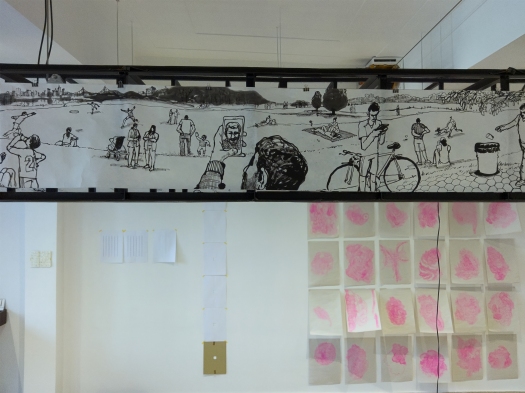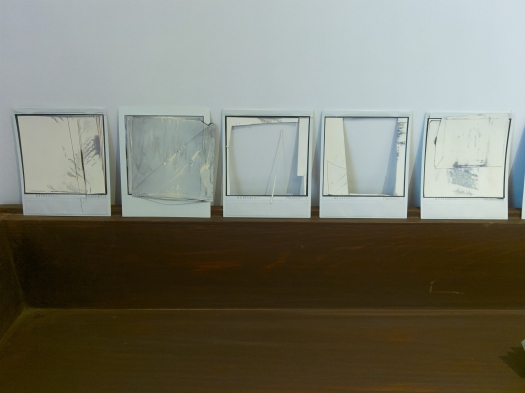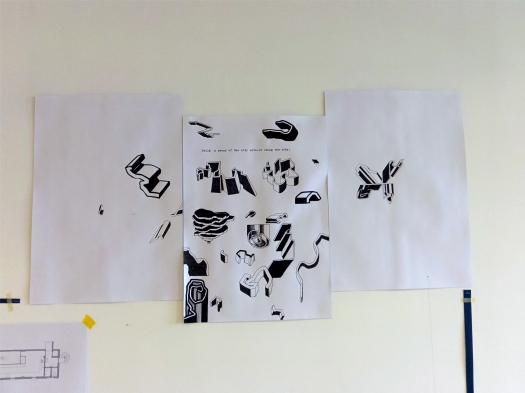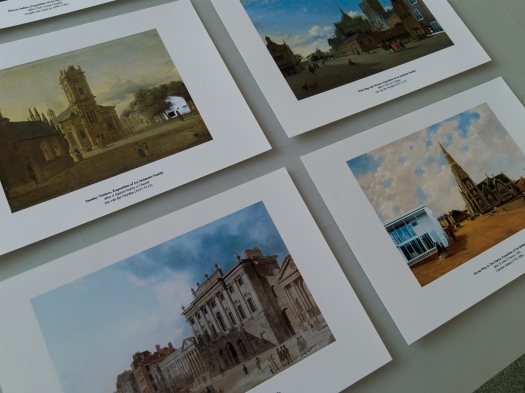The King was in his counting house, counting out his money;
The Queen was in the parlour, eating bread and honey.

SqW:Lab came out of conversations about process, domesticity and drawing between curator Charlie Levine, architect Katsushi Goto, artists Vishwa Shroff and Tash Kahn, and art writer Rosanna Van Mierlo.
Charlie explains: “One evening the ideas all came together into a new programme of work we’d like to realise, entitled Square Works Lab (SqW:Lab) – it is a place where 10 creatives from all over the world can come together to work site responsively, question the ideas of domesticity, showcase their process in the form of drawings, doodles and notes, and be inspired by each other, and encourage collaboration. during the three months fellowship.
During the three –month fellowship, SqW:Lab will be an “‘active space,’ a hybrid structure that [is] part art school, part community centre and part artistic laboratory.”
SqW:Lab’s initial focus are the themes Drawing and the Domestic, and Place and Process.

Drawing and the Domestic
Ideas of domesticity have shifted time and again. Domestic environments are strongly defined by the traditional, intimate and private ideas of family, which are relied upon for the development of space, subject or individual. This Modernist construct, invented to organise health, education and to regulate, emphasises the intimate family, which structurally defines gender roles, private (and largely exclusive of) sections of society that do / do not conform to this ideal. As a result, it determines how domestic spatiality is organised, what material is used and how it overall influences the development of modern housing.
Drawing practices heavily support this ideological shift, with drawn plans, elevations and illustrations (incl. photographs) representing projected aspirations and desires for the occupants. Whilst drawing has always played a significant role within professional dialogues, the prominence of drawn plans for inhabitants came about in the early 20th century, emphasising material and dioramic representations that were overlayed on plans and models, taking attention away from spatial organisation, and rather animating the pre-determined pursuits of its occupants – furniture catalogues, with their dismantled unfolded interiors, particularly helped realise such ambitions. As a result, drawing has become imperative to our understanding of domesticity. Drawing needs to be reconsidered, it is not only a tool that illustrates private aspirations, rather it is an explorative method (or tool) to question our understanding of spatial organisation, explore alternative domesticities, spatial paradigm shifts and to examine physical constituents of existing dwellings.

Place and Process
We want to question how we explore new places. How do we re-discover these familiar places? How can we manipulate the way people navigate space? And how can we create neighbourhoods and communities with pre-existing models? How can such an exploration positively impact pre-existing communities and change perceptions of everyday creativity? How does one’s creative process change within a collaborative context? How can we explore the interconnectivity between space and action? What makes people tick?
Inspired in part by these predetermined uses of space and how having a gallery in a domestic space alters the ‘household’ and its neighbourhood, along with the act of drawing, Place and Process uses Hans Ulrich Obrist’s ‘do it’ series as its foundation.
do it is a series of instructions for artists to ‘do’ using a set of ‘rules’. This series has travelled the world, ever-expanding as new contributors get involved: “do it tried to develop exhibitions that built a relation to their place, that constantly changed with different local conditions, and created a dynamic, complex system with feedback loops. It changed places and places changed it.”
With all this in mind, the SqW:Lab Fellows are invited to examine and work in similar ways utilising all of these components – drawing, the domestic, place and routine, and exploring how instructions can help develop each other’s practice and collaborative opportunities.


